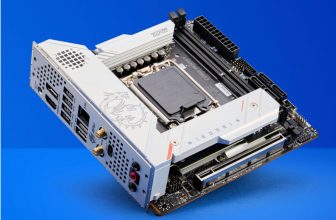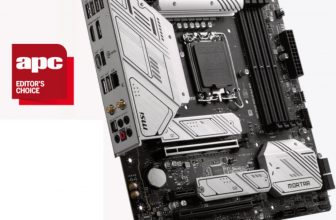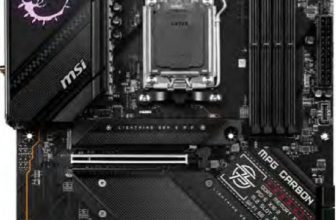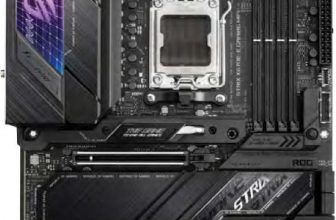Asus TUF Gaming B650 Plus WiFi Review
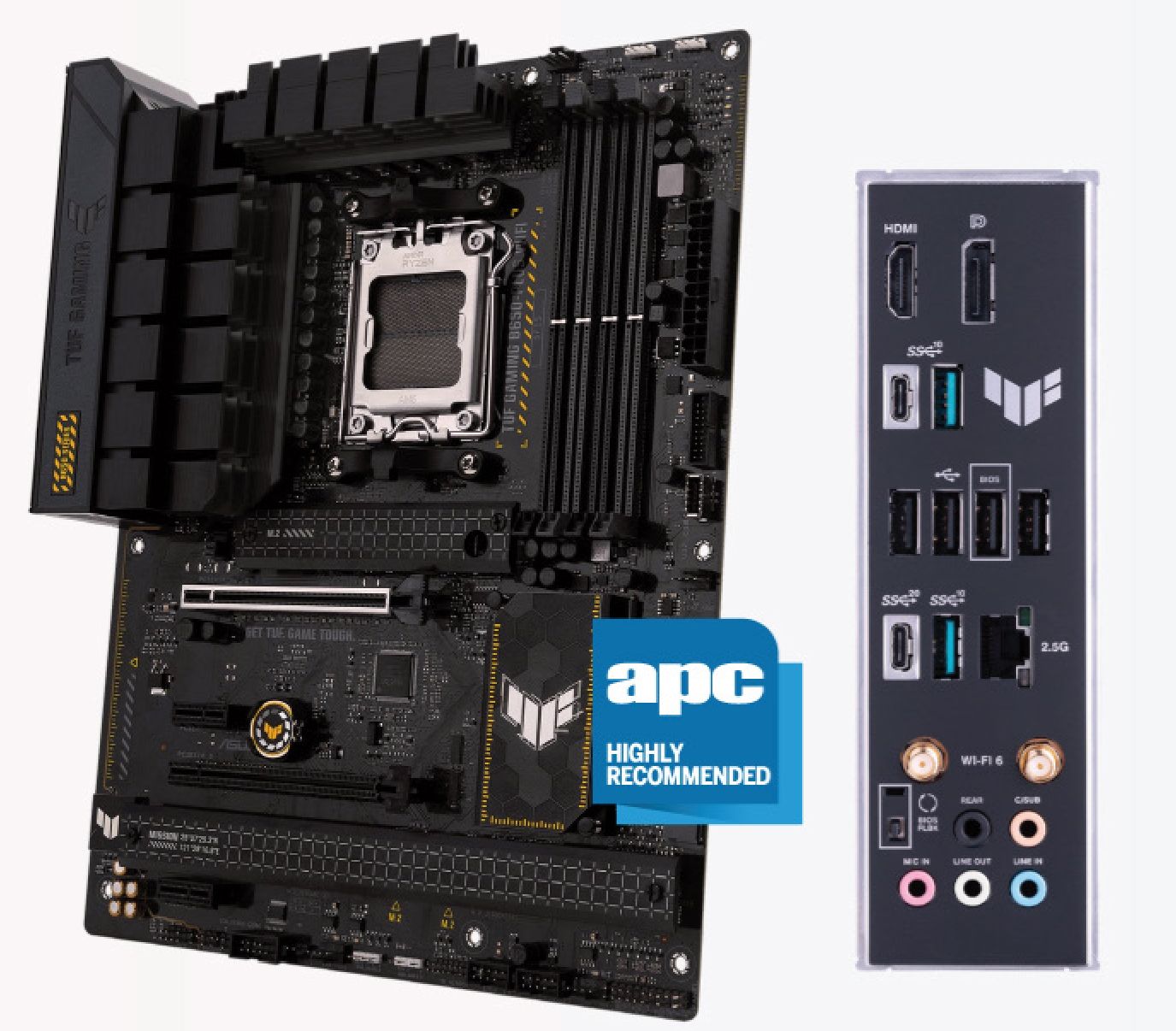
Looking for affordable AM5? B650 may be just what you’re looking for. Read our Asus TUF Gaming B650 Plus WiFi Review.
Asus TUF Gaming B650 Plus WiFi; Socket AM5; Supports AMD Ryzen 7000 series desktop processors; 3x M.2; 4x SATA; Up to 1x USB 3.2 Gen2x2, 3x USB 3.2 Gen 2, 3x USB 3.1 Gen 1, 8x USB 2.0; WiFi 6; Realtek 2.5G LAN; Realtek 7.1 Channel HD Audio; ATX Form Factor.
Though AMD’s AM5 motherboards and Ryzen 7000 CPUs have a lot going for them, the pricing of high end motherboards is a weakness. Let’s face it, $+ X670E boards aren’t going to attract many buyers. Fear not! AMD’s B650E and B650 motherboards are plentiful, bringing Socket AM5 down to an affordable price point.
B650/E differs from X670/E in that it comes with just one ‘chipset’ as opposed to the two of X670/E. This means B650 has fewer PCIe 4.0 lanes and a generally trimmed down I/O. Unlike B650E, B650 boards forgo PCIe 5.0 graphics support, with most retaining PCIe 5.0 M.2 support. The Asus TUF Gaming B650 Plus WiFi is just such a board.
The TUF B650 costs around $ at the time of writing. That’s not what you’d call cheap, but the Asus comes with a good feature set for its price. Note that Asus offers cheaper mATX versions of the TUF B650, along with non-Wi-Fi versions too.
The board comes with the trademark TUF black finish with yellow highlights. RGB is absent, though there are four headers on board. For your storage needs, the board comes with three M.2 slots and four SATA ports. The M.2 heatsinks are adequate, though they aren’t as chunky as those you’ll find on more expensive boards.
The VRM isn’t anything spectacular, though a 12+2 phase design with 60A stages and 8+4 pin power was enough to power our 7950X without issue. Where the board really impresses is its VRM heatsink assembly. The big and chunky heatsinks do a great job. Well done Asus.
The TUF B650 comes with a good set of rear I/O ports. A USB 3.2 Gen 2×2 Type-C port is joined by another three 10Gbps ports and four USB 2.0 ports. You get 2.5G LAN and WiFi 6, though notably not 6E if that matters to you. It’s good to see HDMI 2.1 and DP 1.4 ports. They’ll be particularly welcome if AMD chooses to release Zen 4 APUs in the future.
When it comes to benchmarking, most boards perform within a margin of error. Results with our 7950X CPU were very competitive with more expensive X670E boards. It’s also well worth having a play with Asus’ enhanced PBO modes which allow you to easily tinker with power levels or tune the system to match your cooling.
|
Asus TUF Gaming B650-Plus WiFi |
Asrock X670E Pro RS | |
|
Cinebench R23 – Multi thread Score |
38,334 |
38,154 |
|
Blender 3.2 Whitelands – Time (seconds) Lower is better |
403 |
404 |
|
7Zip – Billion Instruction per second |
225.69 |
224.97 |
|
Handbrake 1,6 – 4K 10-Bit HEVC to 1080p FPS |
129.1 |
128.7 |
|
3DMark TimeSpy Extreme – Score |
18,183 |
18,119 |
|
Ghost Recon: Breakpoint – 1080p, Low, Avg FPS |
306 |
312 |
|
Metro: Exodus Enhanced – 1080p, Ultra Preset, Avg FPS |
162 |
161 |
Some boards still trip up when it comes to support for very fast EXPO memory. Our G.Skill DDR5-6000 C30 and it worked perfectly. That’s a testament to Asus’ BIOS team, which can usually be relied upon for up-to-date RAM compatibility.
What does a typical user want from a 2023 motherboard? Consider things like a decent VRM, WiFi 6, PCIe 5.0 SSD support and 20Gbps USB. The Asus TUF Gaming B650-Plus WiFi ticks these boxes. If you can live without WiFi 6E and PCIe 5.0 GPU support, it’s the kind of board that will surely be popular. And like all AM5 motherboards, it will have a long life with plenty of upgrade potential. To be fair, there are many competing motherboards in this price range, but if you’re a fan of Asus, you’ll be happy with the TUF Gaming B650-Plus WiFi.
Chris Szewczyk
When you purchase through links on our site, I may earn an affiliate commission. Here’s how it works.






